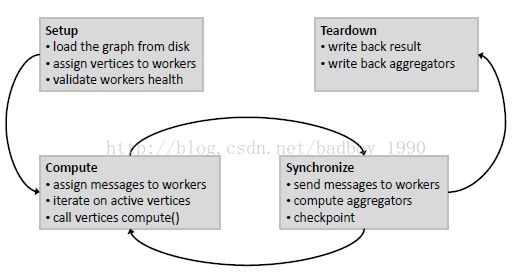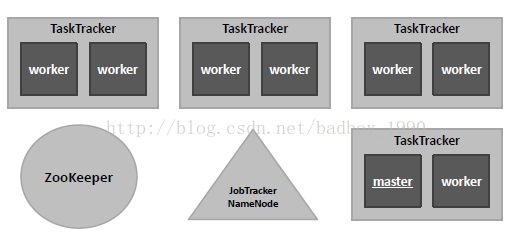Giraph基础介绍
Giraph Overview
Apache Giraph is an iterative graph processing system built for high scalability. For example, it is currently used at Facebook to analyze the social graph formed by users and their connections. Giraph originated as the open-source counterpart to Pregel, the graph processing architecture developed at Google and described in a 2010 paper. Both systems are inspired by the Bulk Synchronous Parallel model of distributed computation introduced by Leslie Valiant. Giraph adds several features beyond the basic Pregel model, including master computation, sharded aggregators, edge-oriented input, out-of-core computation, and more. With a steady development cycle and a growing community of users worldwide, Giraph is a natural choice for unleashing the potential of structured datasets at a massive scale.
原理:
Giraph基于Hadoop而建,将MapReduce中Mapper进行封装,未使用reducer。在Mapper中进行多次迭代,每次迭代等价于BSP模型中的SuperStep。一个Hadoop Job等价于一次BSP作业。基础结构如下图所示。
Giraph 的基础架构
每部分的功能如下:
(1)ZooKeeper: responsible for computation state
–partition/worker mapping
–global state: #superstep
–checkpoint paths, aggregator values, statistics
(2) Master: responsible for coordination
–assigns partitions to workers
–coordinates synchronization
–requests checkpoints
–aggregates aggregator values
–collects health statuses
(3) Worker: responsible for vertices
–invokes active vertices compute() function
–sends, receives and assigns messages
–computes local aggregation values

